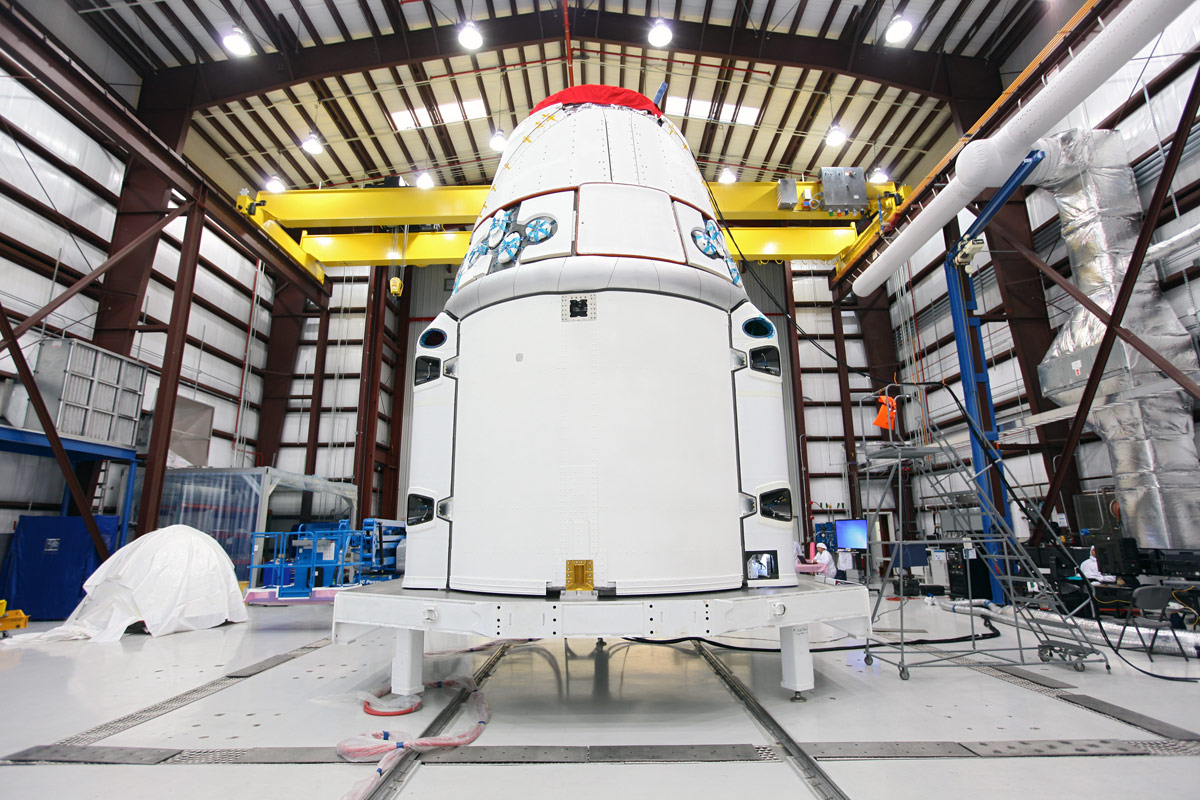How to Watch SpaceX Launch Private Rocket for NASA Today: 2 Live Webcasts

The private spaceflight company SpaceX is counting down to launch an unmanned space capsule to the International Space Station today (March 1) and you can watch the blastoff live online with two official webcasts.
SpaceX is on track to launch a Falcon 9 rocket today from the Cape Canaveral Air Force Station in Florida to send a robotic Dragon space capsule packed with precious NASA cargo for the space station. Liftoff is set for 10:10 a.m. EST (1510 GMT), with an 80 percent chance of good weather conditions, NASA has said.

Both NASA and the Hawthorne, Calif.-based SpaceX will provide webcasts for the launch to give space fans options to tune in. NASA's launch webcast will begin at 8:30 a.m. EST (1330 GMT), and may include commentary from space station officials, astronauts and other agency officials. It will be broadcast live on the NASA TV channel, as well as streamed online by the space agency.
You can watch NASA's SpaceX Dragon launch webcast on SPACE.com,courtesy of NASA TV.
SpaceX's webcast will begin at about 9:30 a.m. EST (1430 GMT), and feature a different list of guests and experts. It will be streamed live at SpaceX's launch webcast website.
"SpaceX hosts will provide information specific to the flight, an overview of the Falcon 9 rocket and Dragon spacecraft, and commentary on the launch and flight sequences," SpaceX officials said in a statement. [See photos of SpaceX's Dragon on the launch pad]
Today's launch is the third SpaceX mission to the International Space Station and second Dragon mission to carry cargo for the orbiting laboratory. SpaceX launched a demonstration flight to the station in May 2012, and followed it with the first full-up cargo delivery mission in October of that same year. SpaceX is the first private company every to launch a mission to the space station.
Breaking space news, the latest updates on rocket launches, skywatching events and more!
The Dragon spacecraft launching today will carry about 1,200 pounds (544 kilograms) of supplies to the space station. It will return 2,300 pounds (1,043 kg) of experiment results and other hardware back to Earth on March 25 when the space capsule is due to splash down in the Pacific Ocean off the coast of Baja California — something robotic cargo ships for the station built by Russia, Europe and Japan cannot do.
SpaceX has a $1.6 billion contract with NASA to provide at least 12 unmanned cargo delivery missions to the space station using its Falcon 9 rockets and Dragon space capsules. The company is also developing a manned version of the Dragon capsule, a spacecraft designed to ferry seven astronauts into and from space, in hopes of flying NASA astronauts to the station in the future.

The other company is Virginia-based Orbital Sciences Corp, which is developing the new Antares rocket and robotic Cygnus spacecraft to fulfill its $1.9 billion contract with NASA for eight cargo missions to the space station.
NASA is also working with four companies that are developing commercial manned spacecraft that may soon carry American astronauts to the space station. That group includes SpaceX, which was founded in 2002 by billionaire entrepreneur Elon Musk, co-founder of the Internet pay service PayPal, specifically to develop new low-cost rockets and spacecraft.
Musk has said repeatedly in the past that his plan was always to pursue manned spaceflight with SpaceX. He named the Falcon 9 rocket after the fictional Millennium Falcon spaceship from "Star Wars" and the Dragon capsule after "Puff the Magic Dragon."
Visit SPACE.com for complete coverage of SpaceX's launch today, as well as the Dragon's round-trip flight to the space station and back to Earth.
You can follow SPACE.com Managing Editor Tariq Malik on Twitter @tariqjmalik. Follow SPACE.com on Twitter @Spacedotcom. We're also on Facebook & Google+. This article was first published on SPACE.com.
Join our Space Forums to keep talking space on the latest missions, night sky and more! And if you have a news tip, correction or comment, let us know at: community@space.com.

Tariq is the award-winning Editor-in-Chief of Space.com and joined the team in 2001. He covers human spaceflight, as well as skywatching and entertainment. He became Space.com's Editor-in-Chief in 2019. Before joining Space.com, Tariq was a staff reporter for The Los Angeles Times covering education and city beats in La Habra, Fullerton and Huntington Beach. He's a recipient of the 2022 Harry Kolcum Award for excellence in space reporting and the 2025 Space Pioneer Award from the National Space Society. He is an Eagle Scout and Space Camp alum with journalism degrees from the USC and NYU. You can find Tariq at Space.com and as the co-host to the This Week In Space podcast on the TWiT network. To see his latest project, you can follow Tariq on Twitter @tariqjmalik.
